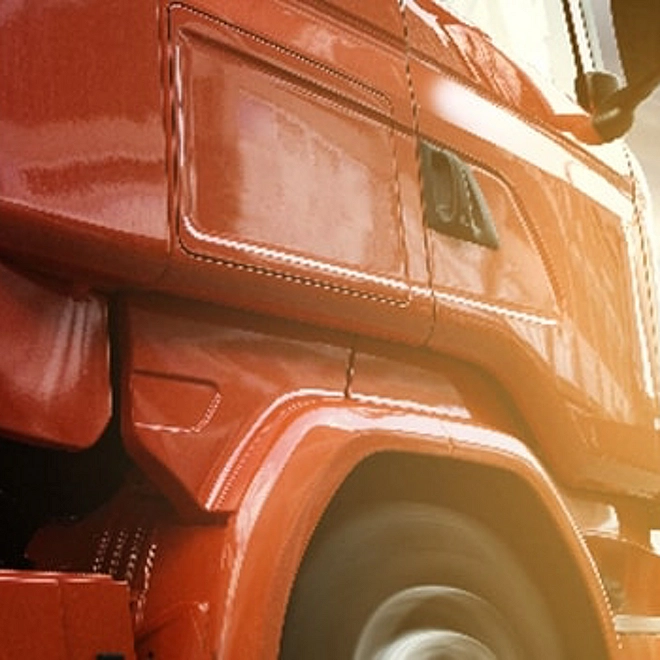Driverless delivery and last-mile coverage
Driverless delivery for last-mile connectivity has started to gather steam over the past couple of years. With autonomous technologies moving out of nascent stages of development, delivery of goods has been recognized as a major application for this technology. This theme has been propelled further with the pandemic gripping the world, and leaving logistics and delivery systems stifled.
The shortage of personnel for delivery services, owing to pandemic-induced lockdowns and customer desires for contactless transactions, has led to a rapid increase in the adoption of driverless delivery services. The transformation also is the result of retailers needing to automate their delivery systems. According to the Deloitte Future of the Movement of Goods Survey1, 80% of companies surveyed are either currently investing in or planning to invest in technologies like autonomous trucks or delivery drones/droids. Similar numbers represent the participants looking to leverage IoT and sensor data to drive automation. Driverless technology users utilize autonomous deliveries for two major purposes:
- Delivery of goods from warehouses to stores and outlets for restocking inventory and shelves
- Delivery of goods from stores to end consumers
While there has been significant progress in the adoption of this technology in the private sector, governments and authorities may not always keep pace with formulating legal frameworks to regulate the usage. Even mature markets like the United States and Europe, which have identified the key challenges posed by this technology, can consider doing more to create operating frameworks or regulations.
While driverless delivery technology has gathered momentum during the pandemic, it will easily outlast this period with both companies and consumers recognizing and, already, reaping benefits from it.
— Scott Rosenberger
(Global Transportation, Hospitality & Services sector leader)
Key trends
The use of driverless-delivery technology has diversified from a logistics solution for individual companies to an “as-a-service” option for multiple end-users. The players entering this segment come from eclectic backgrounds, including traditional users like big box retailers to technology companies.
Observations and trends from the last-mile driverless delivery ecosystem:
Urban warehousing: the key to unlocking the full potential of driverless delivery
- The largest target audience for driverless delivery lies in urban regions. To fully automate delivery systems, companies are using urban warehouses to ensure that their autonomous vehicles can source products for delivery from locations closer to their destinations. This prevents them from travelling too far, reduces dependency on stores to fulfill orders, and thereby reduces the total number of journeys.
Partnerships are key for operations
- Companies need to have one of three attributes to establish cross-sector partnerships most effectively; market potential, capital for R&D, or technical expertise to develop technologies. Therefore, it comes as no surprise that many large corporations with both scale and capital are partnering with smaller tech firms to capitalize on their technical expertise.
Starting with college campuses as test markets is proving to be highly beneficial
- For many driverless-delivery services, college campuses have become effective testing grounds for their ventures. Campuses provide a sizeable audience that is generally willing to adopt newer technologies, has little apprehension toward automation, and often have fewer regulations and permits than in denser and more residential parts of metropolitan areas.
Food delivery: the major segment for driverless delivery
- During the pandemic, one of the adversely affected segments within home delivery was food delivery done by delivery agents. Companies became more interested in using autonomous delivery to reduce the need for human contact, thus reassuring consumers of the hygiene status of the product getting delivered2
No company has reached large scale commercialization (which is likely to continue)
- Expansion of autonomous vehicles (AVs) will likely be gradual and will happen region-by-region in specific categories of transportation. While there are examples of small-scale adoptions, there are no clear market leaders in the segment.
Overcoming challenges and optimizing last-mile autonomous delivery
Region in focus: Growth traction by geography
Regional insight and takeaway:
While some factors driving autonomous delivery are similar across regions, certain factors are unique to specific geographies.
- Europe is expected to register a CAGR of 19.4% between 2021 and 20283. Growth drivers include a flourishing ecommerce sector and increasing utilization of delivery drones for supplying medical products.
- North America is expected to grow at a rate of 19.8% through 20283 with early adoption, extreme weather conditions, and robotic delivery start-ups driving growth.
- The APAC region will grow by 18.1% through 20283 with growth dependent upon the ecommerce and retail sectors.
REGIONAL REGULATORY FRAMEWORK
Conclusion
Driverless delivery has been around long enough to suggest that it is more than just a technological blip on the supply-chain radar. With innovations involving data sensing and data mapping of geographical locations, this technology has the potential to become more precise and scalable. It is anticipated that the scope of the technology will continue to develop, with authorities recognizing and even adopting it for wider use.
Sources:
[1] https://www2.deloitte.com/us/en/insights/focus/transportation/the-role-of-intelligent-automation-in-the-movement-of-goods
[3] https://www.businessgoing.digital/the-legal-framework-for-autonomous-vehicles-in-the-european-union
[4] https://www.fortunebusinessinsights.com/autonomous-last-mile-delivery-market-105598
[5] https://www.cio.com/article/222345/the-state-of-autonomous-vehicles-in-southeast-asia

